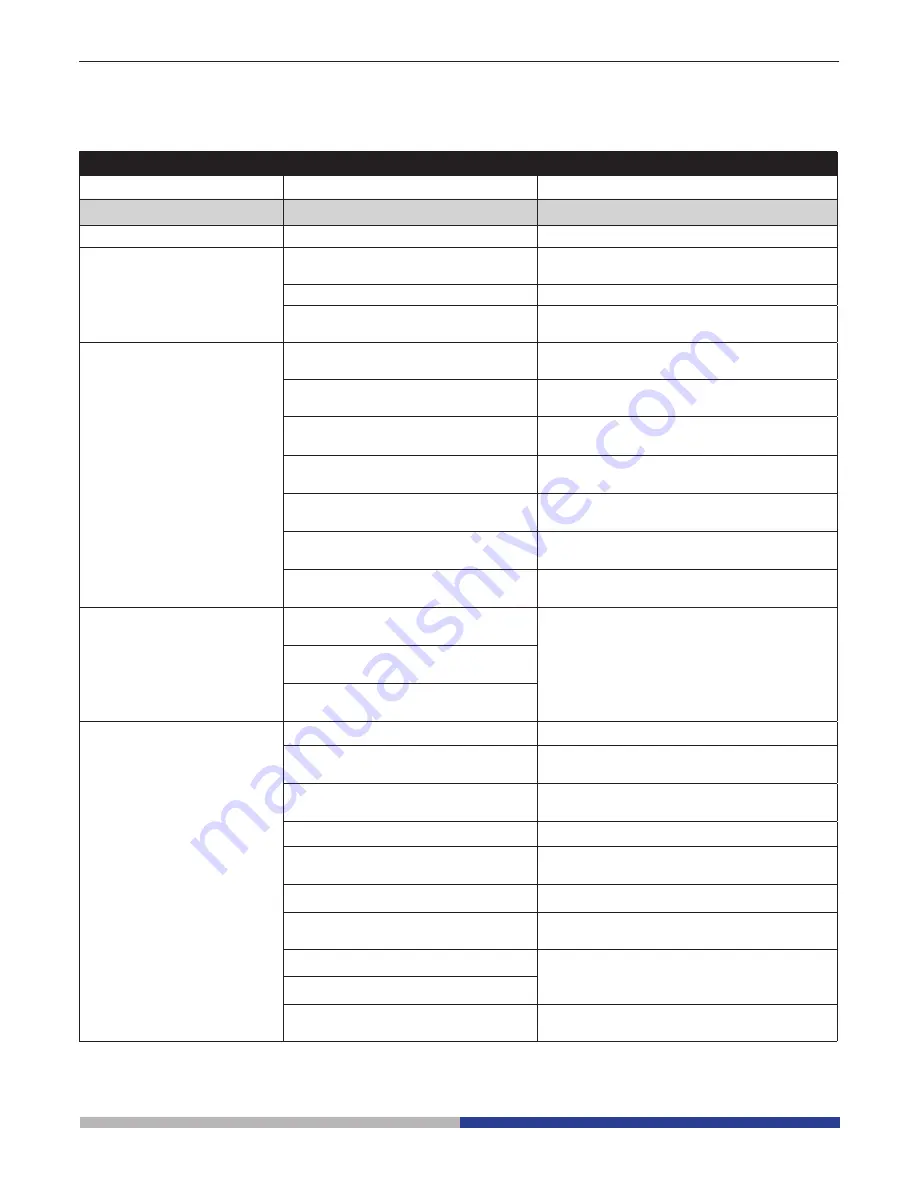
Page 13
Troubleshooting
Review the information in the table below to troubleshoot operating problems.
PROBLEM
CAUSE
SOLUTION
1. Optical System
LED does not light.
Power cord is unplugged.
Plug power cord into the power outlet.
LED operates, but field of view
remains dark.
Aperture and field iris diaphragms are
not opened wide enough.
Adjust them to proper sizes.
Condenser is lowered too much.
Adjust the condenser height position.
Light path selector knob is set to the
camera position.
Move the knob to the eye position.
Field of view is obscured or
not evenly illuminated
Light path selector knob is in an inter
-
mediate position.
Set the knob according to the observation
method.
Revolving nosepiece is not correctly
engaged.
Make sure that the revolving nosepiece
clicks properly into place.
Condenser is not attached properly.
Re-attach it.
Revolving nosepiece is not attached
properly.
P
ush the side dovetail all the way until it is
stopped.
A
n objective that falls outside of the
condenser’s illumination range is used
.
U
se a condenser to match the purpose.
Condenser is not properly centered.
C
enter the condenser.
F
ield iris diaphragm is stopped down
too far.
O
pen the field iris diaphragm until it circum
-
scribes the field.
D
irt or dust is visible in the
field of view.
Dirt/dust on the eyepieces
Clean thoroughly.
Dirt or the to surface of the condenser
Dirt/dust on the specimen
Visibility is poor
.
· Image is not poor.
· Contrast is poor.
· Details are indistinct.
· Image glares.
Condenser is lowered too far.
Adjust the condenser height position.
Aperture iris diaphragm is stopped
down too far.
Open aperture iris diaphragm.
R
evolving nosepiece is not mounted
properly.
Push the slide dovetail all the way until
it is stopped.
Front lens of objective is dirty.
Clean objective.
Immersion oil is not being used with an
oil immersion objective.
Use immersion oil.
Immersion oil contains bubbles.
Remove the bubbles.
Recommended immersion oil is not
used.
Use the provided immersion oil.
Dirt/dust on specimen.
Clean it.
Dirt/dust on condenser
Inappropriate object side or cover
glass thickness.
Replace with glass of recommended thick
-
ness.
































